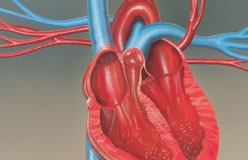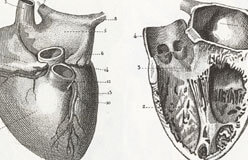As you read this, your heart is pumping about five quarts of blood throughout your body.
The blood is traveling through more than 60,000 miles of blood vessels (arteries, veins, capillaries). That’s enough to circle the equator twice, and then some! A heart works tirelessly over a lifetime. During an average life, the heart beats 3 billion times without a single break. Not bad for a muscle the size of a fist and lighter than a couple of baseballs.
Your heart works so hard for one reason—to keep you alive. It pumps blood through your body all of the time. That blood contains cells and chemicals. Without blood’s precious “cargo,” your muscles and organs, your heart, and most especially you would die. If the cargo becomes imbalanced—if some chemicals are low or missing—your body systems stop working correctly. If a virus invades, the blood transports an army of disease-fighting white blood cells to the site of attack. Muscles and organs—especially the brain—need a steady supply of oxygen to live. Red blood cells carry oxygen, and without it, brain tissue begins to die off in a few minutes.
Treat your heart right, and this tireless machine will keep going and going and going.







